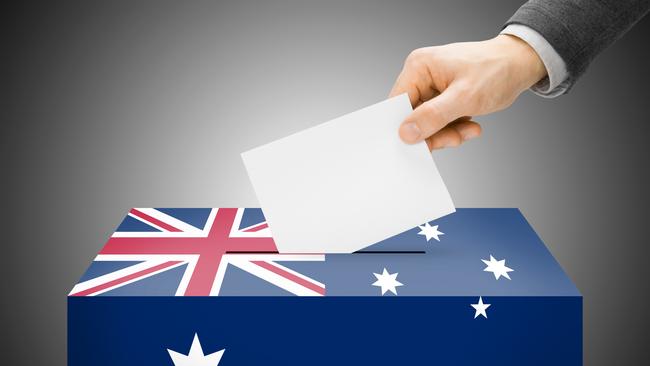Voters thinking for themselves when it comes to the ballot box
Research following the NSW elections shows how-to-vote cards are not swaying voters when it comes to directing their preferences.

A growing army of voters are ignoring how-to-vote cards at the polling booth and making up their own mind on directing preferences in a behavioural shift that could have significant implications for the federal election.
More people were also now waiting until the dying days of election campaigns to decide their vote, suggesting the final week of the contest would be critical.
An exclusive survey of voters following the NSW election result has revealed traditional election campaigns had become largely irrelevant with most voters describing the NSW campaign as “boring” and riddled with the “same old stuff”.
The JWS Research survey of 1000 voters found 63 per cent of voters in the NSW poll decided their own preferences and had completely ignored the parties’ how-to-vote cards.
JWS managing director John Scales said the NSW post-election survey report had implications for the federal campaign, in particular the row over One Nation and Greens preferences, with a large number of voters rejecting the how-to-vote cards.
Prime Minister Scott Morrison last week directed the Liberal Party to place One Nation preference behind Labor in the wake of the cash for gun-law scandal engulfing the minor party.
The JWS research found that 53 per cent of Coalition voters at the NSW election on March 23 ignored the how-to-vote card.
“While there might be group disenfranchisement among non-major party voters, many are individualistic in their voting behaviour, which is particularly fitting of the individual basis of the values of the centrist-right end of the spectrum,” Mr Scales said.
“They won’t be patronised by being told how to vote.”
The poll found that 25 per cent of voters had made up their mind on who to vote for only on the day of the election.
This reflects a trend that has been apparent since the 2016 federal election campaign.
“Late decision-making was most common among voters for minor parties and independents,” the research showed.
“Three-quarters (76 per cent) of these electors decided to vote this way during the campaign period, three in 10 on election day (31 per cent), highlighting the importance of campaigning all the way through to the close of booths on election day.
“Almost two thirds decided their own voting preferences, only a third used a how-to-vote card.
“Among those who voted for the Greens, or other minor parties and independents, eight in 10 decided their own preferences (80 per cent and 78 per cent respectively).
“Among Coalition voters this was much lower (56 per cent), with close to as many (43 per cent) following how-to-vote cards.
“Overall, how-to-vote cards were used most widely among rusted-on voters (83 per cent).”
But Mr Scales said the report revealed the most damning aspect that both sides of politics had to consider was that the traditional campaign style may no longer be working. “I think the other damning thing is the sentiment toward the campaign, shows the party campaigns are lacking relevance and doing very little to engage and excite people,” Mr Scales said.
“Given most people are also voting on election day, the chance to change minds right up to the close of booths is real, even for those who think they might know who they are voting for.
“A lot of people are not deciding until the day, which potentially has a major impact in terms of preferences.”




To join the conversation, please log in. Don't have an account? Register
Join the conversation, you are commenting as Logout